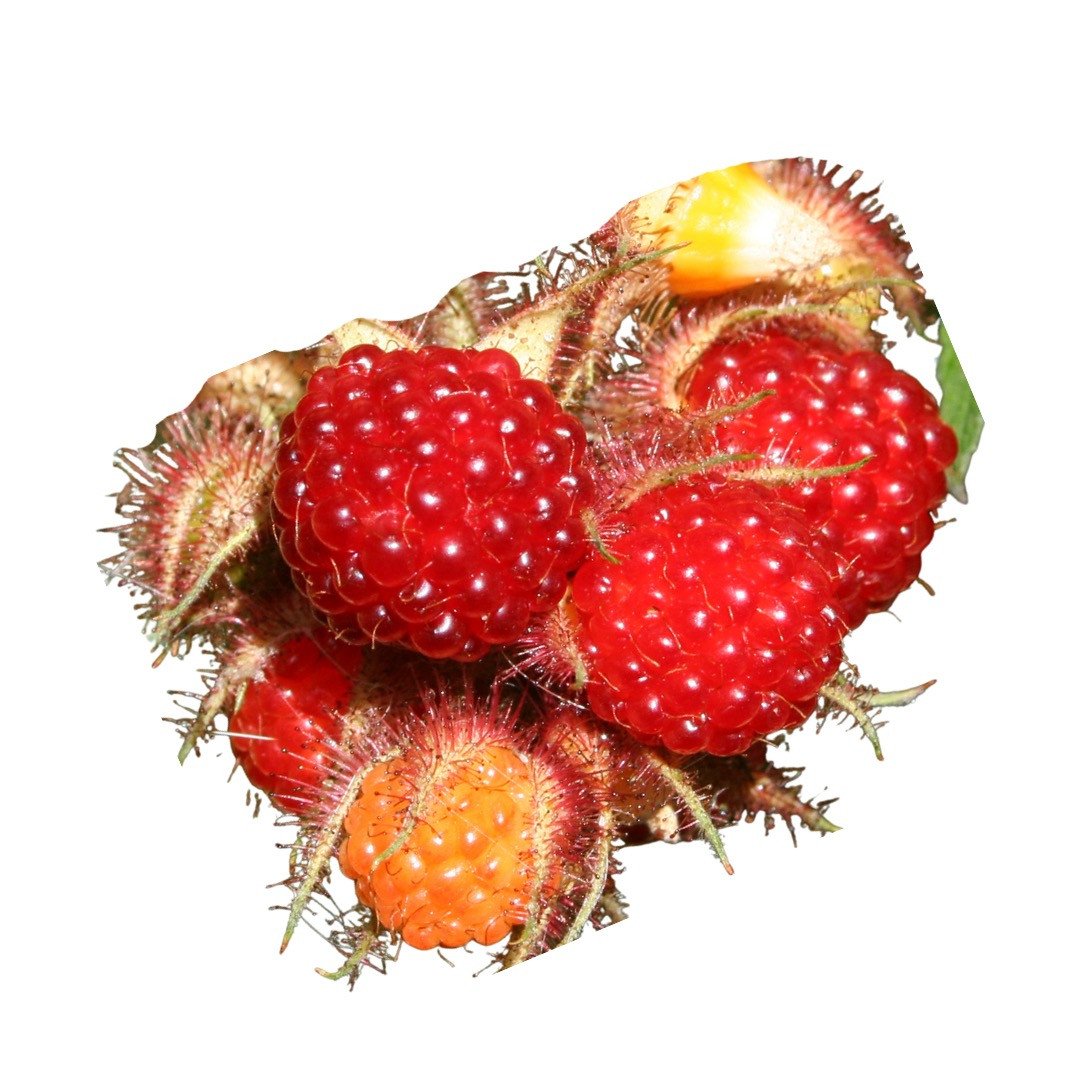Japanese wine berry

Japanese wine berry
Rubus phoenicolasius
Plant family
Rose family (Rosaceae)
Season Overview
Planting
Harvest
Harvest
J
F
M
A
M
J
J
A
S
O
N
D
1ST YEAR
FOLLOWING YEARS
Details
Light requirement
Sunny
Water requirement
Wet
Soil
Medium (loamy)
Nutrient requirement
High
Plant distance
250 cm
Row spacing
250 cm
Seeding depth
0.2 cm
Instructions
Description
The name may be a little confusing at first, as the Japanese wineberry looks more like a native raspberry than a wineberry or grapevine, which is why its second name is red-bristled raspberry. Its growth is typical of berry bushes of the Rubus genus: long, slightly prickly canes arch out from the trunk and form a dense shrub. What is unique about the Japanese grape berry, however, is the bright red color of its bark, which makes the deciduous shrub look very attractive even in winter. Its striking bristly dark red flower buds also catch the eye. The berries of Rubus phoenicolasius are orange-red aggregate stone fruits and look confusingly similar to red blackberries. However, at around one centimeter long, they are somewhat smaller, softer and a little sticky.
Growing tips
The Japanese grape berry thrives particularly well in neutral to calcareous soil (pH 6.5 to 7.5). The substrate should be fresh when planting and may contain some gravel or clay. Like all berries, the Japanese grape berry needs plenty of sunlight so that the fruits can ripen well and develop their sweetness. A full sun location is ideal for the fruit-bearing canes, although their base should be somewhat shaded if possible.
Antagonistic Plants
Diseases
No diseases
Pests
Gall mites